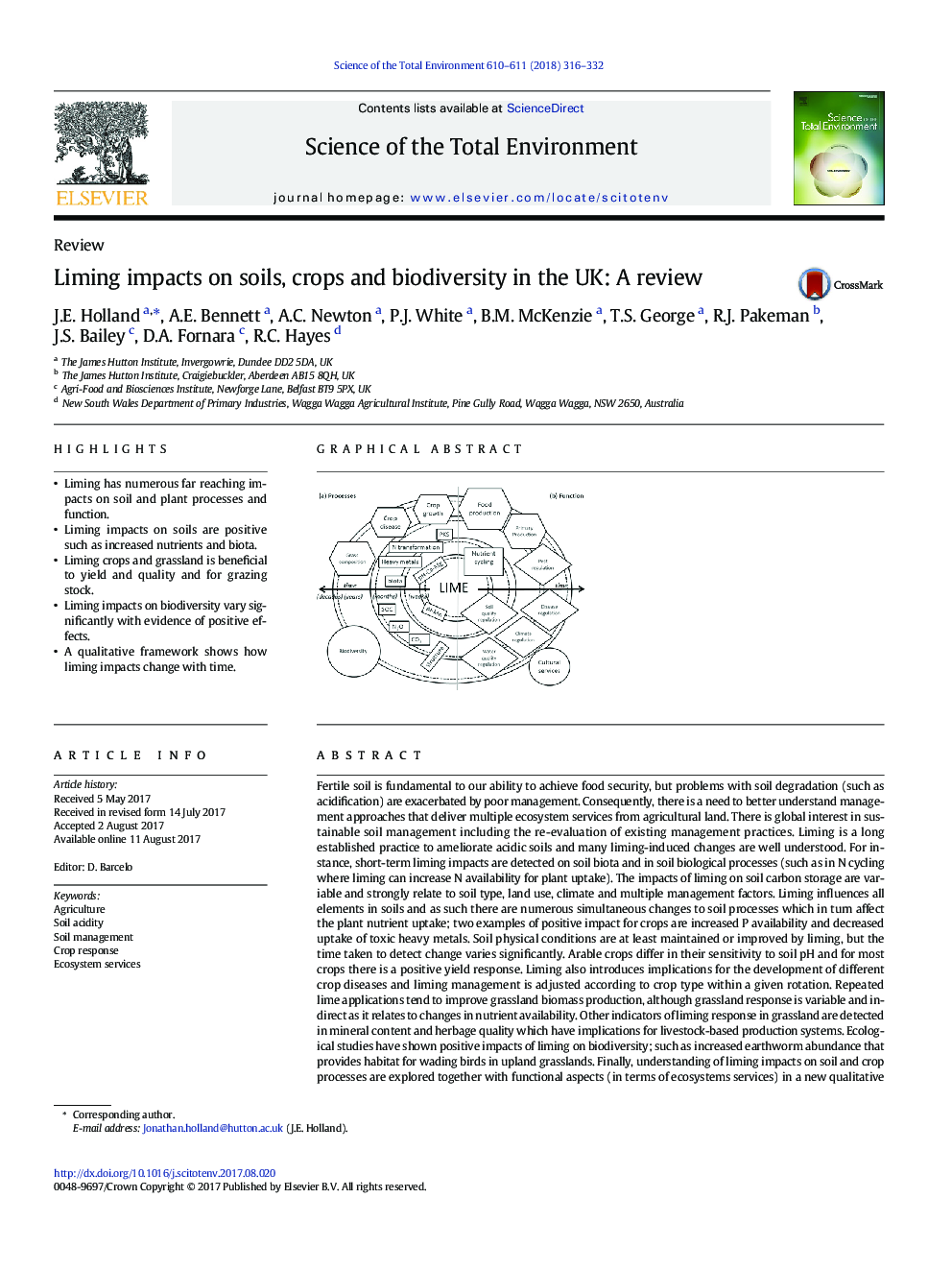| کد مقاله | کد نشریه | سال انتشار | مقاله انگلیسی | نسخه تمام متن |
|---|---|---|---|---|
| 5750197 | 1619692 | 2018 | 17 صفحه PDF | دانلود رایگان |
- Liming has numerous far reaching impacts on soil and plant processes and function.
- Liming impacts on soils are positive such as increased nutrients and biota.
- Liming crops and grassland is beneficial to yield and quality and for grazing stock.
- Liming impacts on biodiversity vary significantly with evidence of positive effects.
- A qualitative framework shows how liming impacts change with time.
Fertile soil is fundamental to our ability to achieve food security, but problems with soil degradation (such as acidification) are exacerbated by poor management. Consequently, there is a need to better understand management approaches that deliver multiple ecosystem services from agricultural land. There is global interest in sustainable soil management including the re-evaluation of existing management practices. Liming is a long established practice to ameliorate acidic soils and many liming-induced changes are well understood. For instance, short-term liming impacts are detected on soil biota and in soil biological processes (such as in N cycling where liming can increase N availability for plant uptake). The impacts of liming on soil carbon storage are variable and strongly relate to soil type, land use, climate and multiple management factors. Liming influences all elements in soils and as such there are numerous simultaneous changes to soil processes which in turn affect the plant nutrient uptake; two examples of positive impact for crops are increased P availability and decreased uptake of toxic heavy metals. Soil physical conditions are at least maintained or improved by liming, but the time taken to detect change varies significantly. Arable crops differ in their sensitivity to soil pH and for most crops there is a positive yield response. Liming also introduces implications for the development of different crop diseases and liming management is adjusted according to crop type within a given rotation. Repeated lime applications tend to improve grassland biomass production, although grassland response is variable and indirect as it relates to changes in nutrient availability. Other indicators of liming response in grassland are detected in mineral content and herbage quality which have implications for livestock-based production systems. Ecological studies have shown positive impacts of liming on biodiversity; such as increased earthworm abundance that provides habitat for wading birds in upland grasslands. Finally, understanding of liming impacts on soil and crop processes are explored together with functional aspects (in terms of ecosystems services) in a new qualitative framework that includes consideration of how liming impacts change with time. This holistic approach provides insights into the far-reaching impacts that liming has on ecosystems and the potential for liming to enhance the multiple benefits from agriculturally managed land. Recommendations are given for future research on the impact of liming and the implications for ecosystem services.
207
Journal: Science of The Total Environment - Volumes 610â611, 1 January 2018, Pages 316-332
